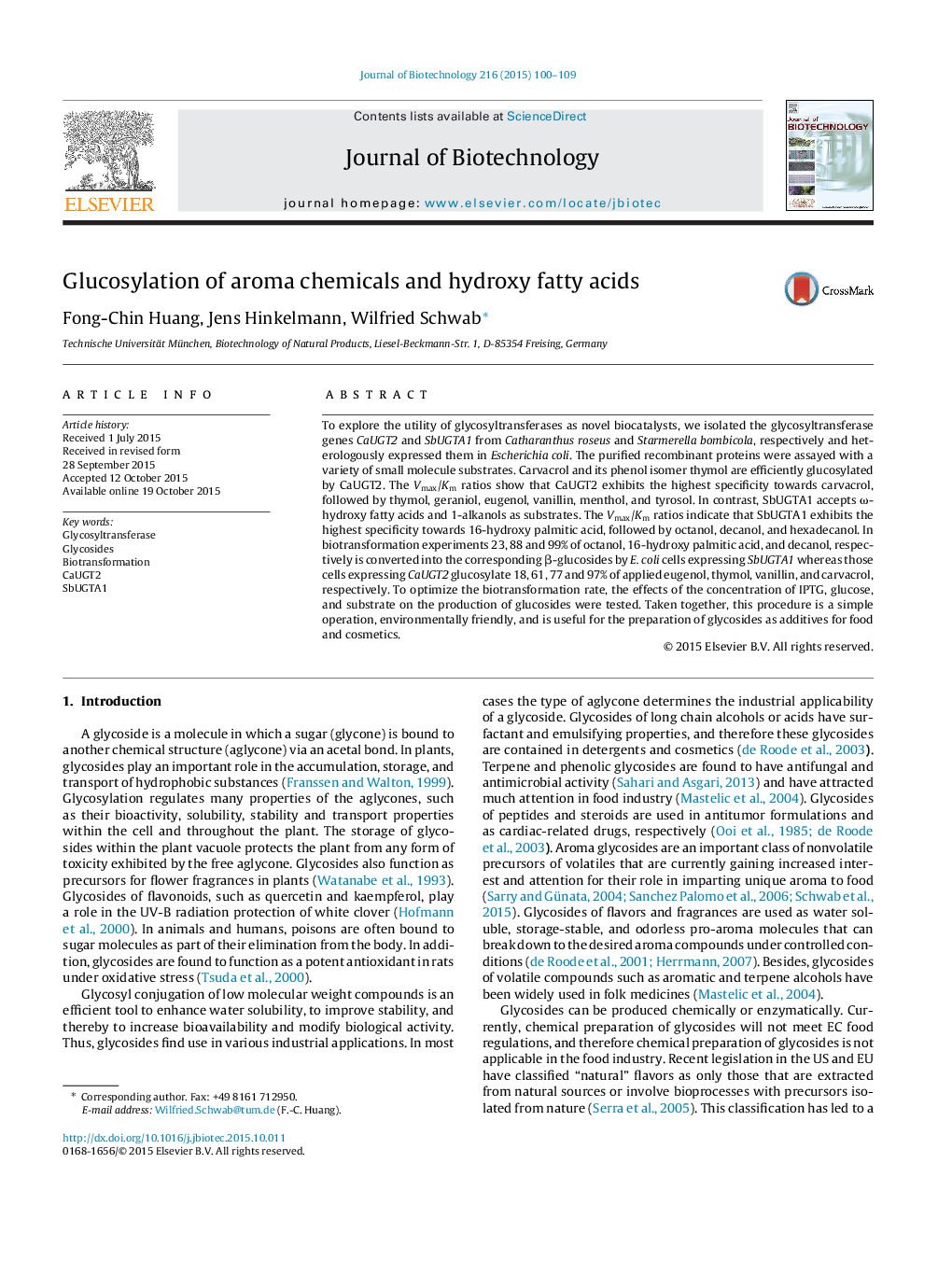| کد مقاله | کد نشریه | سال انتشار | مقاله انگلیسی | نسخه تمام متن |
|---|---|---|---|---|
| 22791 | 43384 | 2015 | 10 صفحه PDF | دانلود رایگان |
• CaUGT2 and SbUGTA1 were isolated from the plant Catharanthus roseus and the fungus Starmerella bombicola, respectively.
• Carvacrol and its phenol isomer thymol are efficiently glucosylated by CaUGT2.
• SbUGTA1 accepts ω-hydroxy fatty acids and 1-alkanols as acceptor substrates.
To explore the utility of glycosyltransferases as novel biocatalysts, we isolated the glycosyltransferase genes CaUGT2 and SbUGTA1 from Catharanthus roseus and Starmerella bombicola, respectively and heterologously expressed them in Escherichia coli. The purified recombinant proteins were assayed with a variety of small molecule substrates. Carvacrol and its phenol isomer thymol are efficiently glucosylated by CaUGT2. The Vmax/Km ratios show that CaUGT2 exhibits the highest specificity towards carvacrol, followed by thymol, geraniol, eugenol, vanillin, menthol, and tyrosol. In contrast, SbUGTA1 accepts ω-hydroxy fatty acids and 1-alkanols as substrates. The Vmax/Km ratios indicate that SbUGTA1 exhibits the highest specificity towards 16-hydroxy palmitic acid, followed by octanol, decanol, and hexadecanol. In biotransformation experiments 23, 88 and 99% of octanol, 16-hydroxy palmitic acid, and decanol, respectively is converted into the corresponding β-glucosides by E. coli cells expressing SbUGTA1 whereas those cells expressing CaUGT2 glucosylate 18, 61, 77 and 97% of applied eugenol, thymol, vanillin, and carvacrol, respectively. To optimize the biotransformation rate, the effects of the concentration of IPTG, glucose, and substrate on the production of glucosides were tested. Taken together, this procedure is a simple operation, environmentally friendly, and is useful for the preparation of glycosides as additives for food and cosmetics.
Journal: Journal of Biotechnology - Volume 216, 20 December 2015, Pages 100–109
